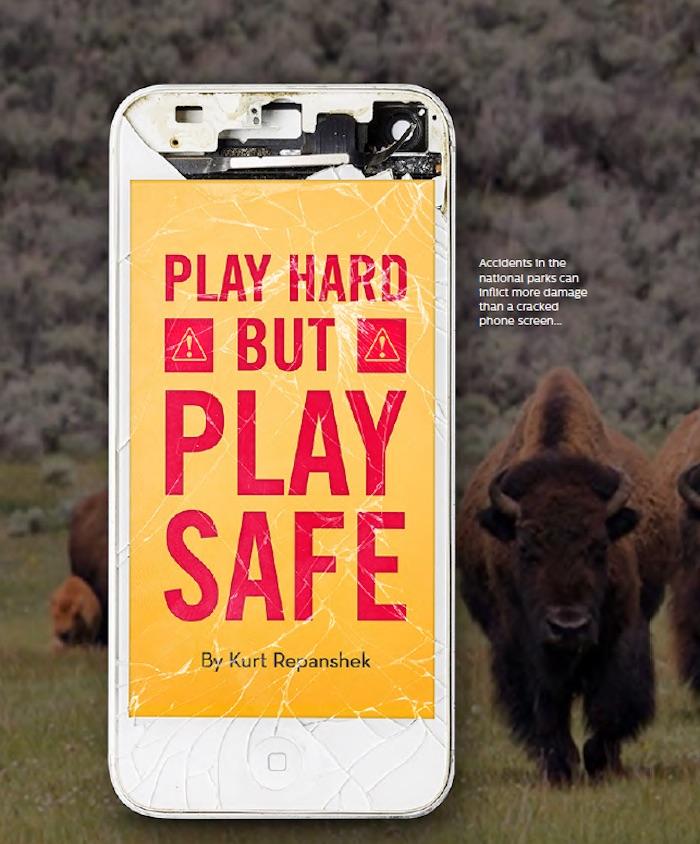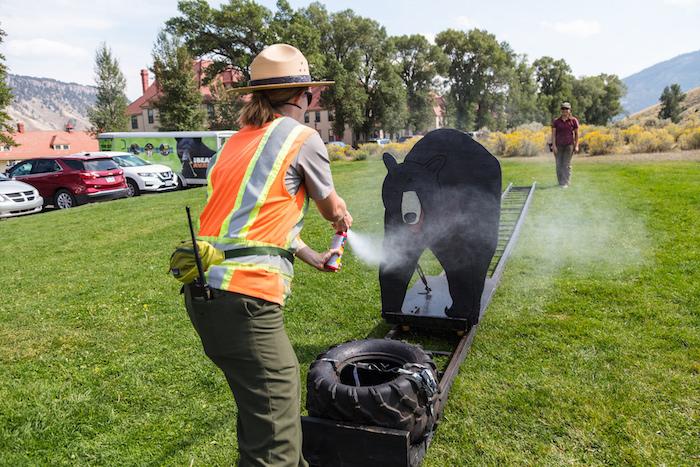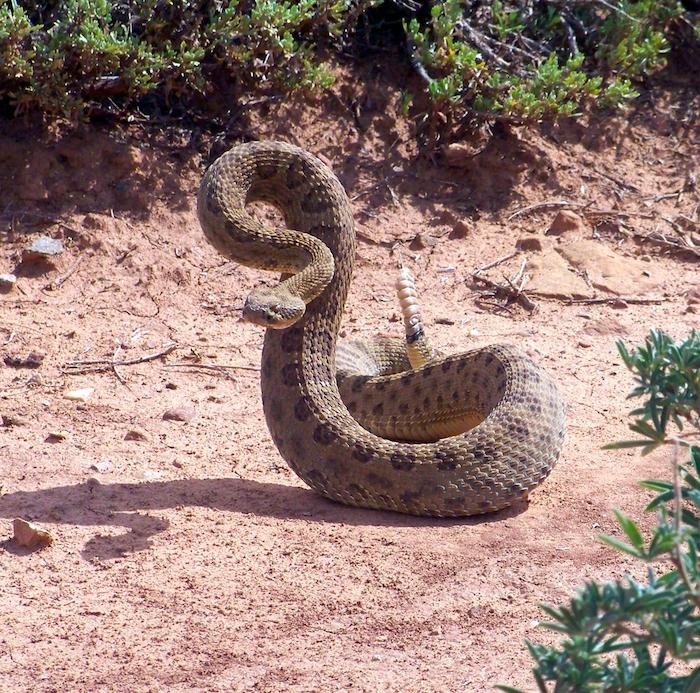
Every day we are overwhelmed with stunning photos from the National Park System. Instagram, Twitter, Facebook, and Pinterest, along with other websites and social media outlets, feed us spectacular photos of high country lakes, wild grizzlies, bison, glaciers, and stunning peaks. While they provide the inspiration to head out into the parks, they don’t always show how difficult and, sometimes, how dangerous, it can actually be.
As more and more people visit our parks, more of them are faced with some unintended consequences from the wilderness, and even conflicts with wildlife. A little apprehension during your visit might mean your safe return.
Last year alone, in 2017, Glacier National Park welcomed 3.3 million visitors, more than a 10 percent increase from the year before. So, why are so many more people coming to visit?
“Are we seeing social media impacts?” wondered Glacier Superintendent Jeff Mow. “Last year was interesting, because last year was the 50th anniversary of the Night of Grizzlies,” he added.
Night of the Grizzlies, for those unfamiliar, is the title of a book that recounted the fatal mauling on August 13, 1967, of two young women in the park’s backcountry by grizzly bears. They were horrific incidents that Jack Olsen recounted in a three-part series for Sports Illustrated, and then as a book.
“It made me think,” Superintendent Mow said, referring to that book, “when I grew up back in the ‘70s, Glacier was probably not considered a first-timer’s national park. Not in that aftermath. There were these grizzly bears, and if you were going to go there you really needed to know what you’re doing.
“And you know, when I see what goes on today, I think social media has sort of stripped that all away, that barrier (of apprehension), as psychological as it was, is just gone,” he said.
While the ruggedness of the park’s backcountry, and the power of grizzlies as outlined in Night of the Grizzlies, once kept neophytes glued to the front country and off many trails, the superintendent has a hunch that the bombardment of gorgeous photos has diluted that level of apprehension.
“It was our concessions folks who were saying, ‘You know, we have never seen so many people who have never been to a national park before,’” he said. “And to them that was remarkable, because that’s not the norm, that’s not what we’ve historically seen.”
That lack of familiarity with Glacier, and not knowing exactly what to expect, brought many visitors who evidently were not prepared for the physical hardships and commonsense demands.
“We had 14 days in a row on the Highline Trail, 14 days in a row, we had to do carry-outs,” said Superintendent Mow, referring to the practice of rangers using litters for rescues. “From usually between Granite Park and the Loop. Generally because people didn’t carry enough water. And it’s only three miles from Granite Park to the Loop, and it’s all downhill.
“I think most people think, ‘Oh, this is easy, this will take less than an hour, let’s just do it.’ They don’t fill up with water like they should,” and soon realize that “this is the hottest, longest, three miles, downhill or not. It’s brutal,” he said.
“We’re seeing people who are less prepared, less experienced in the backcountry, but they still want to go to these places where you get these amazing photos,” said Superintendent Mow.

Be careful on your national park vacation and ensure you don’t need a lift out of the park / NPS
At Iceberg Lake, which requires a 10-mile roundtrip hike through grizzly country to reach, there were times last summer when park staff had to wait to clean the pit toilet at the lake because there were 15-20 people waiting to put on their bathing suits,” said the superintendent.
“We’ve never seen that before. Again, I think that idea of swimming with the icebergs or swimming out to an iceberg and getting your photo taken, it’s all that sort of ‘selfie’ thing.”
And while there are great photo opportunities in the parks, visitors have to still appreciate, and respect, this wild landscape.
In the past few years, Yellowstone National Park has seen a number of incidents where visitors - anxious to get a “selfie” with a bison – got too close to one of these 1,400-pound animals, even turning their backs on them for the photo.
From May to July 2015, bison attacked five Yellowstone visitors, and all five failed to maintain the required 75-foot distance from the animals, according to park investigations. Three of the five sustained injuries while taking photographs from just 3 to 6 feet away, including two who turned their back on the bison to take the picture. One admitted to taking a selfie.
In one 2015 case, an Australian visitor was gored by a bison that tossed him “into the air several times,” an investigation determined. “He got to within 3 to 5 feet from the bison when it charged him.”
In another, a 16-year-old exchange student was gored when she tried to pose next to a bison for a picture. “The girl turned her back to the bison to have her picture taken when the bison lifted its head, took a couple steps and gored her," park staff said.

At Yellowstone, there are opportunities to practice your hand at using bear spray so you’ll feel a bit more comfortable deploying it if you encounter one of the park’s grizzlies / NPS
Memorializing your time in the park has become especially dangerous with the advent of cell phone photography.
“The popularity of smartphone photography, with its limited zoom capacity and social media sharing of selfies, might explain why visitors disregard park regulations and approach wildlife more closely than when traditional camera technology was used,” the Centers for Disease Control and Prevention noted in 2016.
With vacation season upon us, here are some safety tips from various parks for enjoying your park visit without putting yourself in danger.
- Stay on established trails and boardwalks in Yellowstone to avoid the chance of falling into a hot spring.
- At Acadia National Park in Maine, keep a safe distance from Thunder Hole, particularly on stormy days that generate larger than usual waves, or you could get swept into the ocean.
- No matter how hot it is as you’re hiking up the Mist Trail in Yosemite National Park, stay behind the railings that keep you from getting too close to the Merced River as it crashes out of the high country. Slipping into the torrent is deadly.
- At Sequoia National Park, though the Middle Fork of the Kaweah River near Hospital Rock looks very tantalizing when the temperature surpasses 100 degrees, it has a history of drowning visitors not accustomed to the current.
- Cape Cod, Cape Hatteras, and Cape Lookout national seashores all have a history of riptides, which can lead to tragedy. Pay attention to lifeguards. Know how to survive riptides, by swimming parallel to the beach until you escape the sea-going current.
- Angels Landing at Zion National Park might be a badge of courage for those who ascend to its summit, but use your judgment. If the crowds are too great, or your fear gets to you, there’s no shame in turning back. There are trails in other parks – Acadia, Grand Canyon, and Canyonlands, just to mention three – that also have steep drop-offs that need to be respected.
- Some of the biggest sandboxes in the country can be found in Death Valley National Park and White Sands National Monument, but they turn notoriously hot and dangerous in summer when the temperature routinely goes above 100 degrees. Avoid the dunes at midday, and when you do go out, take plenty of water and good footwear to keep from burning your feet.
- Bouldering in parks such as Joshua Tree, Grand Teton, Rocky Mountain, and New River Gorge National River can be fun, but be sure to have spotters and use crash pads to avoid serious injury.
- Be careful where you put your hands when you hike. Rattlesnakes and scorpions could be relaxing in the sun on a handhold just above your head.
- Beware the brinks of waterfalls. These rocks at the top could be slippery with moss and spray, and lead to a fall. And if you intend to jump into a pool, be sure that it is clear of obstructions, and is deep enough.
But, perhaps the greatest threats in the parks are the roads. Most were designed for much slower traffic, and the narrow lanes and lack of shoulders leave little room for error. Be sure your designated driver focuses on the road, not the surrounding landscape, and drives defensively.
After all, a little apprehension can be a healthy thing.

Keep your distance from snakes and you won’t see this attacking display caught of a Western rattlesnake at Mesa Verde National Park / NPS



Comments
Darwin in action. Nature is unforgiving of stupidity. That's what theme parks are for.
Park visitors seem to equate wild animals with their pets back home. Getting up-close to the wilderness commands a healthy respect for danger (both to the visitor and to the fauna) and a "keep your distance" policy. I'd love to see the park personnel warn visitors in the strongest possible terms not to engage with wildlife. Visitors are NOT currently getting the message. That includes international visitors.
I trek alone and have done so for thirty years. I love packing in the High Sierra & the Cascades. Although the few horrific accounts of maulings do cause me to be more careful and take the necessary precautions, I'm more concerned with accidentally injuring myself. Having said that....the reintroduction of wolves and the increase in mountain lion interactions are what concerns me now. It is what is and I can't wait to get back up into the high country.
I experienced this phenomenon during a recent hike in Hocking Hills State Park. Many people hiking that had red-faced crying toddlers, heavily pregnant women, people who were afraid of heights and could barely navigate a steep trail, people with knee/foot/leg injuries or other physical issues and EVERYONE seemed to have a dog. It was amazing. I'm glad that so many people are 'getting outside' but a 5 mile hike in the woods on a rough trail is not the same as a 5 mile walk on a blacktopped bike path.